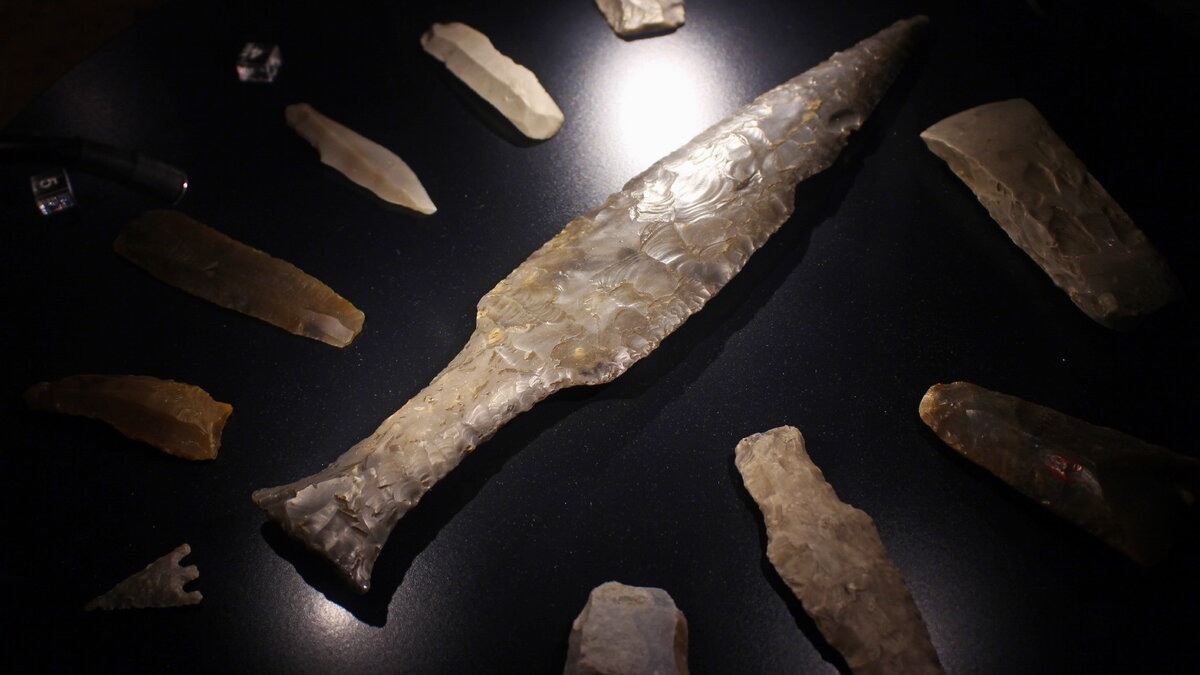Material

Most of the remains of our ancestors consist of materials that are still important raw materials today. Wood, bones and antlers were certainly the most important materials of the first humans, although they have rarely been handed down. Stone, on the other hand, is imperishable. That is why tools made of flint and rock have survived to this day. The first tools made by humans are about 2 million years old and come from Africa.
The firing of clay is the oldest process in which the raw material - in contrast to wood or stone - is not left in its natural state, but is altered by firing and thus made usable in the first place.
Copper and gold occur in nature in a pure, solid form and can therefore be processed directly. They are considered the oldest metals used by humans. The first "manufactured" metal was bronze, a mixture of copper and tin, which appeared in northern Germany 3,600 years ago. Its production required great specialised knowledge about raw materials and their processing. This knowledge eventually led to the first extraction of iron in northern Germany 1,400 years ago. Large deposits of raw materials and the abundance of wood required for smelting ensured the spread of the new technology, which originally came from the Near East.







